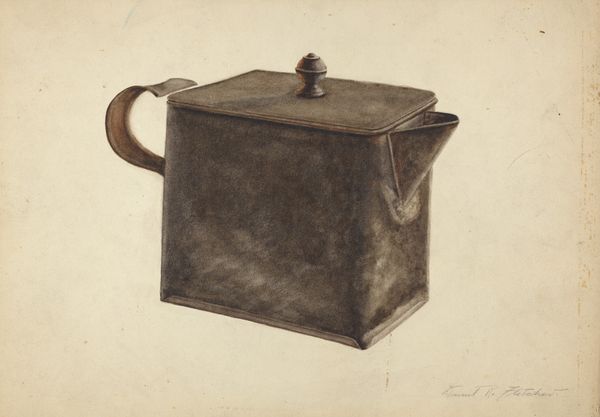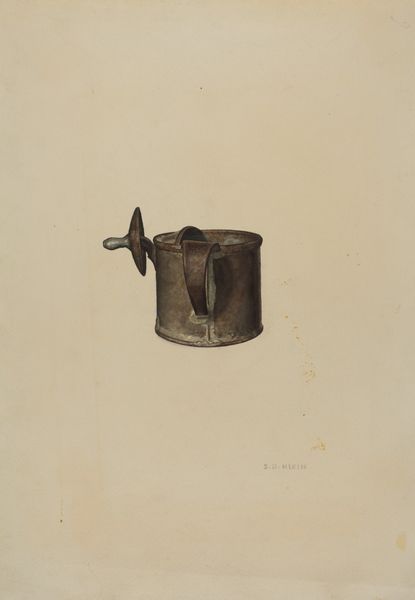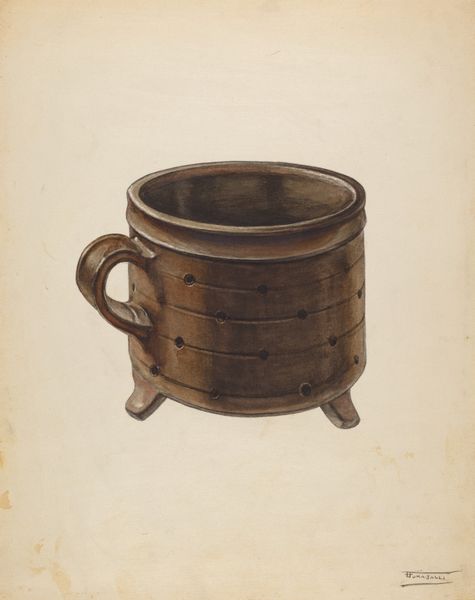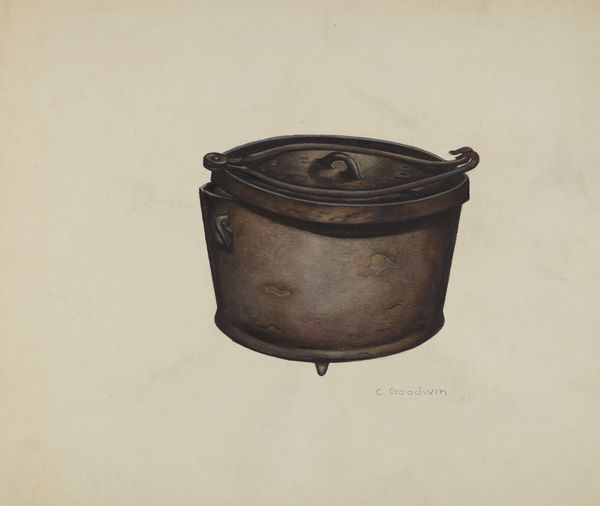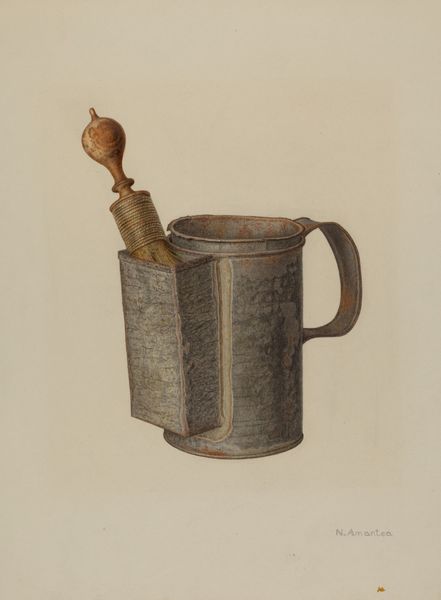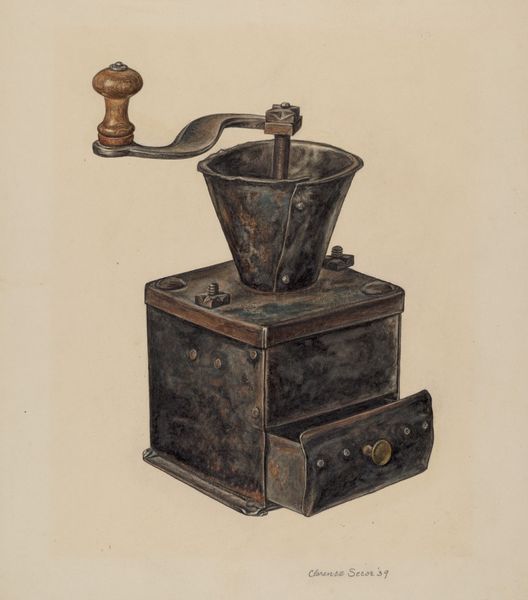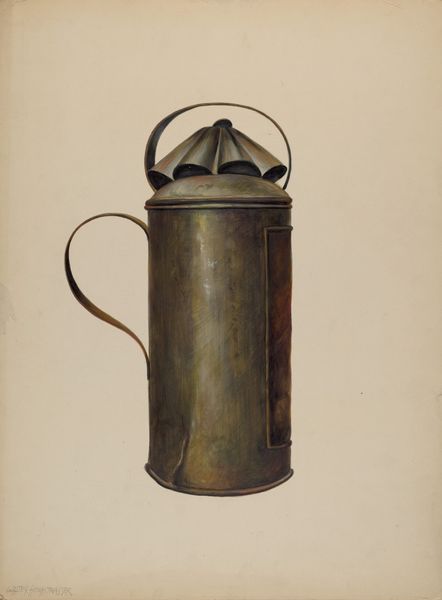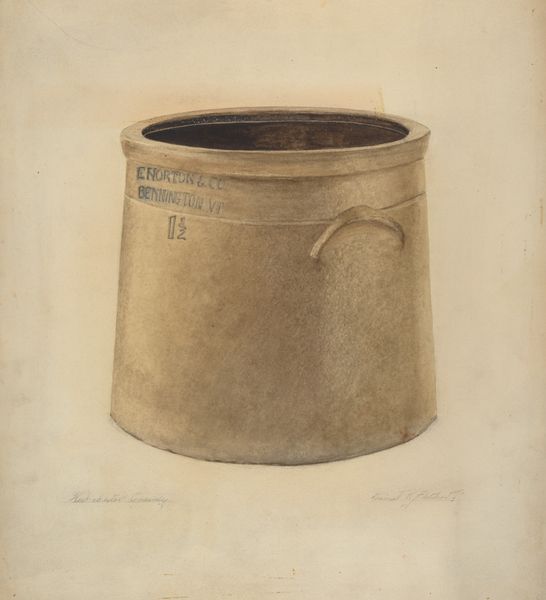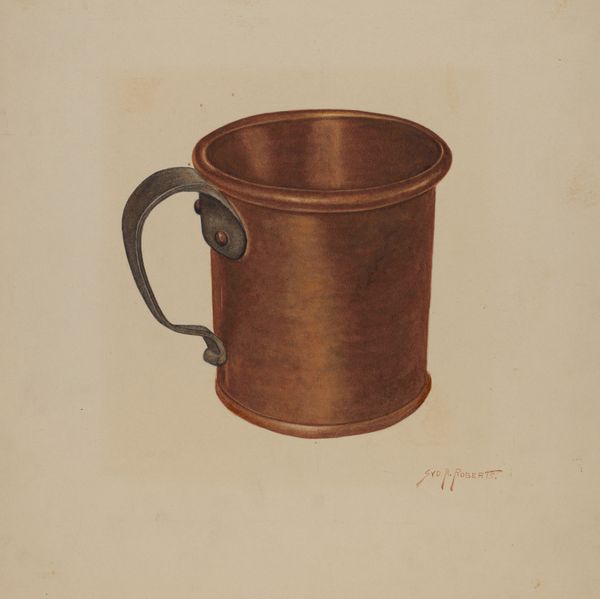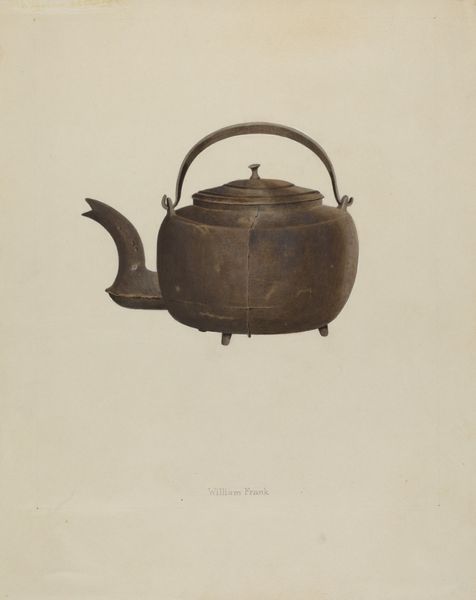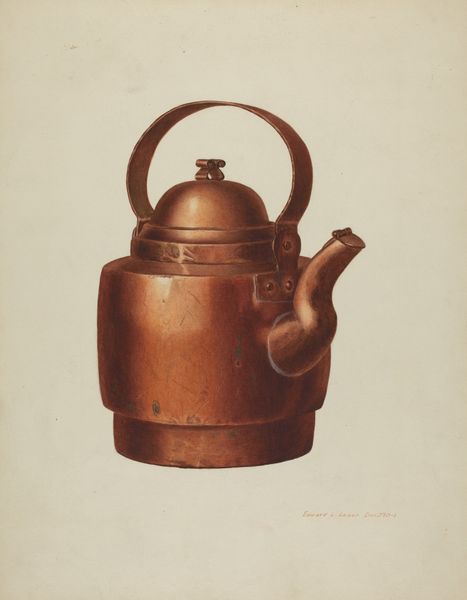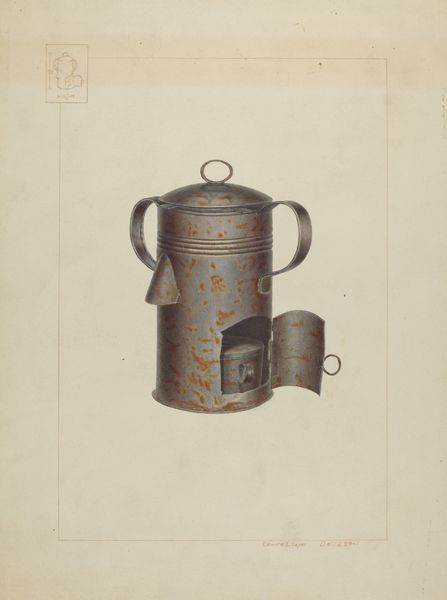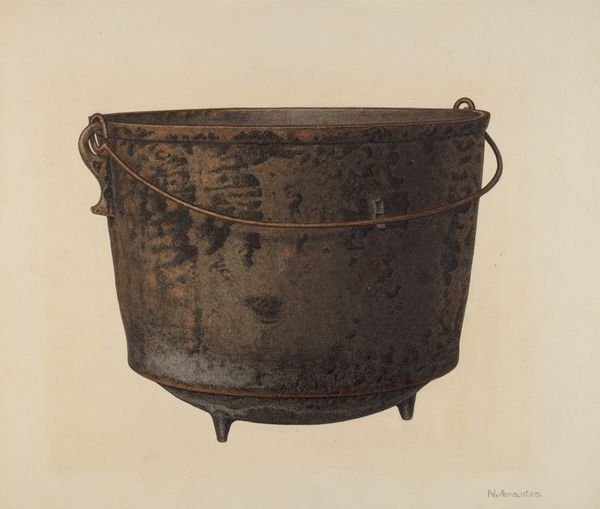
drawing, watercolor
#
drawing
#
sculpture
#
charcoal drawing
#
watercolor
#
watercolour illustration
#
academic-art
Dimensions: overall: 26.6 x 35.5 cm (10 1/2 x 14 in.) Original IAD Object: 5" high; 5" long; 1 1/2" wide
Copyright: National Gallery of Art: CC0 1.0
Curator: This watercolor and charcoal drawing, created around 1939 by Daniel Fletcher, depicts a rather austere-looking teapot. What are your first thoughts? Editor: It's so somber, almost oppressive. That square shape combined with the muted color palette gives it an incredibly weighty presence. It reminds me a little bit of some Depression-era still life photography in terms of that heavy mood. Curator: Indeed. Fletcher created this work in a specific sociopolitical landscape. We might consider how the stark, utilitarian design reflects a turn toward functionalism, prioritizing usefulness over frivolous aesthetics. Perhaps this signals an era valuing efficiency and practical design. Editor: That's an interesting angle. Looking at the materials—watercolor and charcoal on paper—highlights the accessibility of artmaking during this time. The artist wasn’t using precious materials. There’s an echo of making-do there, a certain resourcefulness dictated by the conditions of production. And also the question arises of who owned the depicted teapot? Whose table was it set on? Curator: Those are compelling questions! We should also consider the gaze present here. By immortalizing this seemingly mundane object, what statement might Fletcher be making about labor, gendered labor specifically? Teapots and the rituals of tea were frequently associated with domesticity. Was Fletcher acknowledging or even critiquing those associations? Editor: Definitely a question to consider, though the very regular cubic form strikes me more in line with early modernist machine aesthetics. Maybe the act of representing such a humble, everyday item grants dignity to routine labor and challenges a traditional hierarchy where craft and design might be considered "lesser" arts. Curator: It highlights a tension then, doesn't it? Between mass-produced object and artist rendered individual. Thank you for contributing so much material insight into understanding the importance of art making that makes art that seems insignificant on the surface. Editor: The tension makes this image so interesting. The art forces us to see labor is the most important work. This dialogue with art always leaves you with more to consider.
Comments
No comments
Be the first to comment and join the conversation on the ultimate creative platform.
